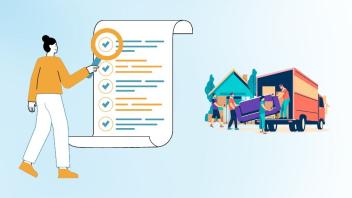The Ultimate Guide to Injury-Free Moving: Tips from the Pros

Moving to a new home is often an exciting adventure, filled with new possibilities and fresh beginnings. However, amidst the excitement of relocating, it's important not to forget about the potential risks and hazards that come with moving. One of the biggest concerns is the possibility of injuries, whether from lifting heavy boxes or moving furniture.
Injuries can not only derail your move but also cause long-term physical and financial repercussions. In this blog, we'll provide you with some steps to help you stay safe and injury-free during your move.
Tip 1: Prepare for the Move
To prevent injuries while moving, it's important to be prepared. Make a schedule and plan ahead to avoid feeling stressed or rushed. Start by packing and decluttering your belongings early so you can take your time and avoid overexertion.
Tip 2: Get the Right Equipment
When it comes to moving, having the right equipment can make all the difference in preventing injuries and ensuring a successful move. You'll need a good set of lifting straps or a dolly. These tools will help you move heavy items like furniture, appliances, and boxes without straining your back or other muscles.
Lifting straps are a great option for lifting items like mattresses or sofas, while dollies are ideal for transporting heavier items like refrigerators or washing machines. In addition, you'll also need other basic moving supplies such as sturdy cardboard boxes, packing tape, bubble wrap, packing paper etc. These items will help you pack and protect your belongings during the move.
Tip 3: Follow Proper Lifting Techniques
Lifting heavy objects can be a common cause of injuries, especially when proper lifting techniques are not followed. By following the measures for safe lifting, you can greatly reduce the risk of injuries.
- Assess the weight: Before lifting an object, assess its weight and size. If it's too heavy or awkwardly shaped, consider using a lifting aid or asking for assistance.
- Plan the lift: Take a moment to plan your lift. Identify the path you will take, ensure there is enough space to move, and remove any obstacles that may be in your way.
- Lift with a partner: If you are lifting a heavy object, consider working with a partner to distribute the weight evenly and reduce the strain on your body.
- Take breaks: Lifting heavy objects can be physically demanding, so take frequent breaks to rest and stretch your muscles. This can help reduce the risk of injury and fatigue.
- Wear proper footwear: Make sure you wear closed-toe shoes with good traction to prevent slips and falls while lifting.
- Use proper posture: Maintain good posture while lifting by keeping your shoulders back, chest forward, and your weight evenly distributed on both feet.
- Avoid lifting overhead: Lifting heavy objects over your head can put a lot of strain on your neck and shoulders. Whenever possible, keep the object close to your body and avoid lifting it above your shoulders.
Note: Remember, if you are unsure about your ability to lift a heavy object safely, don't hesitate to ask for help or use lifting aids.
Tip 4: Take the Necessary Precautions
It's important to protect yourself when moving. Wearing appropriate clothing and footwear can help prevent slips, trips, and falls. Drink plenty of water and eat healthy snacks throughout the move to keep your energy levels up.
Keep walkways clear and well-lit to prevent tripping and falling. Have a first-aid kit on hand in case of an injury. Make sure to listen to your body and take breaks when you need them; if you feel any sort of pain or discomfort, stop and take a break.
Tip 5: Get Professional Help
Moving is hard work and can be dangerous if you don't take the right precautions. Ask for help from family, friends, or professional movers to make it easier and safer. Be clear about what needs to be done and watch out for things that could cause problems, like stairs or heavy objects. Make sure everyone is healthy and strong enough to help.
If you're hiring professional movers, be sure to choose a reputable company with a good track record of safety and reliability. Make sure they are licensed and insured, and ask about their safety protocols and procedures. A good moving company should have a plan in place to prevent injuries and damage to your belongings.
Conclusion
Moving can be a challenging and risky task if not done properly. However, with the measures outlined in this blog, such as using proper lifting techniques, getting help from others, and prioritizing safety, you can make your move less stressful and avoid injury.
It is crucial to plan ahead, communicate clearly, and ensure everyone helping is physically able to do so. By taking these steps, you can have a successful and injury-free move to your new home. Remember, safety should always be a top priority during the moving process.











